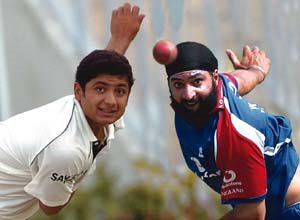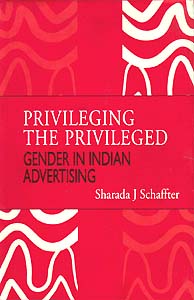L Suresh comes up with four reasons why an otherwise dull series could be remembered.
Dropped catches, missed opportunities, ill-timed injuries, out-of-form stars – and a one-all verdict that gave an insipid ending to a tale of mediocrity, where one team’s misfortunes equaled another’s misadventures. That’s the India-England test series for you, in a nutshell. What began as a series between two teams that, during good times, fancied themselves as second-best after Australia, ended as a slapstick farce, where the only things worth keeping a tab on turned out to be the number of Englishmen who were flying out and the number of catches that the Indians grounded.
If there was a consoling factor to both sides - besides the fact that neither lost the series - it was the coming of age of young foot-soldiers, who, in the absence of their war heroes, took up arms and raced ahead for the fight. A few days before the series, one was in the West Indies, hoping to shake off the tag of Mr. Replacement Man. One was in England, hopelessly standing in a long queue of little-known spinners, one of whom was going to replace Ashley Giles. One was a speedster, once touted as India's fastest, and now in the wilderness, desperately peering through the foliage, only to find a battalion of medium-fast bowlers emerging from nowhere. The fourth was a kid who was born around the time Sachin Tendulkar made his debut in Pakistan. And that was how it all began – the tale of three men and a baby.
The stand-in hero: Alastair Cook
Sharing the surname with a legendary explorer seems to have been pre-destined as Cook found himself doing a flip on Christopher Columbus by starting off for the West Indies and finding himself in India instead, for a test series.
While heroes have a stand-in, here was a stand-in who became a hero. A few months ago, Cook had come very close to India and found himself on the other side of the border, braving a Pakistan winter and standing by for the first man to fall - the injured Michael Vaughan, the stricken-with-family-problems Trescothick or the Dad-to-be Strauss. None did, and Cook ended up familiarizing himself with the dressing rooms of Pakistan, watching his team get beaten 2-0.
Surely, it was only a matter of time for a man who had struck the first nail in Australia’s Ashes coffin, with a blistering 214 off just 238 balls in a warm-up match. The big break came a few months later. From being the most popular best man around, Cook almost became the groom himself when a girl from the crowds proposed to him. A maiden ton and a maiden won – one can’t ask for more in one’s first test!
It must have been the solid hammering in Pakistan, a spate of injuries and the prospects of a series in dustbowl country, but it was amusing to see England line-up a long queue of spinners as potential tourists to India. Giles, Blackwell, Udal, Alex Loudon... the list was so long, even the selectors were shocked to know that there were so many spinners in the country. And then, they added a name to the squad that strangely saw more celebrations in India than in England - Mudhsuden Singh Panesar. The world's only "Ludhianvi from Luton" was flying to his ancestral land to make his mark. Not only would he be the first Sikh to represent England, he would also be part of a historic series that had two turbanators operating, representing opposite sides.
After just three tests, Monty Singh is giving his country’s most experienced spinner sleepless nights. Not surprising, considering that wickets one, two and three in international cricket happen to be those of Sachin Tendulkar, Mohammad Kaif and Rahul Dravid – three of the best players of spin in India. Monty didn’t need a calling card to announce that he had arrived. He had wiped out the Indian middle order without any help from the fielders - no bat-pad catches or snicks to the keeper. One leg before and two bowled. As he made his way back to England, Monty had with him a prized possession – that was probably more precious to him than the Ashes urn was to Michael Vaughan – a rather worn-out cricket ball that bore the autograph of his hero and his first test victim. Given a choice, he would have preferred to cut out the pitch, take it with him and re-lay it in his backyard, but the autographed ball would have to do.
The Baroda Superfast: Munaf Patel
Something strange happens to most fast bowlers who make it to the Indian squad. What they gain in experience, they lose in speed. And then the inevitable happens –injury. Fate faithfully followed the same script for bowlers like Zaheer Khan, Aashish Nehra and Balaji – glory before fall from grace. But in Munaf’s case, the story was edited in a different order – despair and defeat came first. Repeated shunts from Baroda to Mumbai and subsequently to Maharashtra only served to derail the Baroda Superfast. To make matters worse, Munaf was accorded second-hero status in the warm-up match against England as the world waited for VRV Singh to shatter the glass, jump into the fray and knock the Brits out. For the second time in his life, the script took an unexpected change for Munaf. Clocking almost 90 miles per hour, he yorked, reverse-swung and bounced his way into the team.
Munaf’s is the story of the underdog so effectively portrayed in feel-good movies like Rocky, Sea Biscuit and Glory Road – ones that leave audiences hooting and cheering for their champ to win. And with a cheering squad that boasts of Steve Waugh, Dennis Lillee, Sachin Tendulkar and Kiran More, Munaf has no reason to worry. Let the rest aspire for success to become famous. He would do it the other way around.
From time to time, India gets reminded that it is the land of dustbowls and doosras - that's when a fast bowler is promptly dropped and closet fast bowlers like Gavaskar, Solkar and Ganguly operate with the new ball. And whenever this happened, the message was clear – India was playing a third spinner.
But this newcomer was special - they played a batsman less to accommodate him. At 17 years and 67 days, Piyush Chawla became India's second youngest debutant after Sachin Tendulkar. If Sachin’s wicket threw the spotlight on Monty Panesar, his wicket in the Challenger Series last year stopped the country in its tracks – Sachin had just been b-o-w-l-e-d by a 16-year old. The dream run wasn’t over. Piyush went on to add the celebrity scalps of Yuvraj and Dhoni to bring himself into contention for the big league. The good performances were to continue – 5 for 24 in the finals of the Afro-Asia U-19 Cup against Sri Lanka. 4 for 8 in the finals of the U-19 World Cup against Pakistan.
Piyush’s destiny has finally been disclosed - he will start his run up from the point where India’s leading wicket-taker will one day sign off. But it has been anything but a dream beginning so far. Being born a day before Christmas, Chawla could perhaps feel that he narrowly missed out on the queue for gifts, with his debut giving him modest figures of 1–53. But he knows that his time will come - at 17, he has a lot of it in his hands.
(Appeared in the New Indian Express Sunday Supplement on 09 April, 2006)

